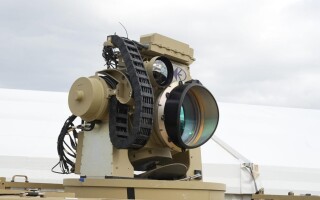Print lives!
StorySeptember 06, 2022

Welcome to our 2022 September Resource Guide, which for the tenth year in a row is 100 pages or more. This feat follows on the heels of our July/August MES issue of 48 pages plus the 76-page SOSA Special Edition. We also added a new print brand this year, mailing with our April/May issue – the FACE Special Edition. Thanks as always to our loyal readers and advertisers for their support. And a special thanks to our editorial staff and contributing authors for providing content that keeps people turning our pages.
(Click here to access the 2022 Military Embedded Systems September Resource Guide.)
Despite the many reports of its demise, print publishing is far from dead. I say this not just as a subtle brag about our publication, but because I’m passionate about print publishing. I love digital too, as it is the future of our business and offers so many possibilities for our audience and advertisers. But print – and please excuse the cliché – is something tangible you can hold in your hand.
Yes, many publications have gone out of business by insisting on staying print-only and eschewing digital, mostly because digital offers more variety and often costs less to produce. But there’s no lack of demand for print magazines and books.
The demand is strong, as Technavio reports in its “Global Marketing Magazine Publishing Market 2022-2026,” stating that “people still preferring to read printed magazines are driving the segment growth.” Yes, in fact, the print segment is growing; the report notes, however, that growth is tethered by paper supply shortages and the ever-increasing cost of circulating print magazines – in other words, postage. But the demand is still there.
Demand remains very strong in the defense electronics community, as we continue to get subscriptions from engineers at prime contractors, third-party suppliers, and government agencies.
As one VP of aerospace and defense for a large semiconductor company told me: “Some of my colleagues think our military group is crazy for doing print advertising, but our customers at the primes still read it. The copies are on their desk when we visit.”
While these are anecdotal examples, the page counts of our publications don’t lie. Interestingly, when the pandemic hit, I had colleagues tell me that I’d better prepare for the decline in print, as folks won’t be in the office as often. Well, those who design weapons systems for military applications were still going into their offices, and print didn’t decline. Last year, those same folks told me to prepare for print to go down as people returned to trade shows. Didn’t happen, plus we added two new print brands.
At those reopened trade shows, the hundreds of magazines we shipped to the venues were gone from the bins in a day. The agendas at the conferences were printed too. Verdict: Post-pandemic trade-show attendees still want print.
Sure, you can say “But you’re over 50”: Nope – these shows had plenty of young engineers grabbing our magazines. More proof: I have a nephew, a sophomore in college, who likes to read the Wall Street Journal every day in print, not online. He tells me his friends still like printed books too, so it’s not just a genetic quirk.
Me, I’m an admitted bibliophile. I love the smell of freshly printed copy. To say I get frustrated when I see people bend or rip their books is an understatement. My nephew does too … so maybe that part’s a genetic quirk.
Walking antiquarian book fairs is a pleasure for me; my wife, however, doesn’t share my love for that particular hobby, as she says these shows attract a lot of people like me “who really like books a bit too much.”
Hmm, lots to unpack there, but let’s stick to the paper-and-ink angle. Even if they’re not print-obsessed like me, my nephew, and the attendees of those book shows, people still want print magazines, especially in the military world.
Remember that paper shortage we mentioned? Could be that part of the reason for the shortage is that people still want print products!
Speaking of supply chain, be sure to check out our articles dealing with the electronics and semiconductor supply chain: "Securing the software supply chain by modernizing legacy systems" on page 40 by GitLab Federal's Bob Stevens; and "Playing catch-up: How defense and aerospace can improve the component procurement of DMSMS products" on page 46 by Frank Cavallaro of A2 Global Electronics.
Anyway, please enjoy reading this, our largest print product of the MES year.






